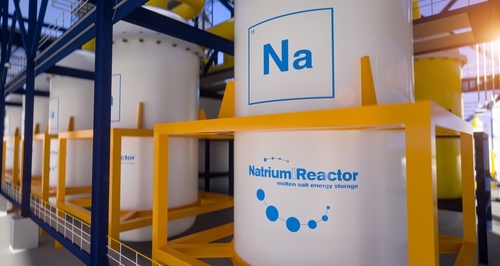Thermal Oil vs. Other Heat Transfer Fluids: Which Is Best for Your Needs?
Thermal Oil vs. Other Heat Transfer Fluids: Which Is Best for Your Needs?
Blog Article
Exactly How to Select the Best Heat Transfer Fluid for Your Heating and Cooling Systems
Choosing the appropriate warmth transfer fluid for home heating and cooling systems is a nuanced process that demands careful consideration of several variables. It is essential to assess the details functional temperature array, as well as the thermal buildings such as conductivity and viscosity that impact system performance.
Comprehending Heat Transfer Fluids
Warm transfer liquids play an important duty in various industrial and business applications by facilitating the transfer of thermal energy. These fluids are important in systems such as home heating, air conditioning, and energy generation, where reliable thermal monitoring is crucial for operational performance. The main feature of heat transfer liquids is to take in warmth from a resource and transportation it to a marked area, where it can be utilized for home heating or exchanged power.
Heat transfer fluids can be classified right into numerous classifications, consisting of fluids, gases, and phase-change materials, each serving particular applications based on their thermal residential properties. thermal oil. Typical examples include water, oils, and refrigerants, which are selected relying on the temperature level array, pressure conditions, and compatibility with system materials
The performance of a warmth transfer liquid can substantially affect the overall performance of a thermal system. Aspects such as thickness, thermal conductivity, and certain warm capacity determine just how well a liquid can transfer warm. Comprehending these qualities is vital for picking one of the most suitable liquid for a particular application, guaranteeing optimal efficiency and dependability in commercial procedures.
Trick Residence to Consider
Choosing the suitable warmth transfer liquid needs careful factor to consider of a number of key homes that influence performance and effectiveness. Thermal conductivity is essential, as it identifies the liquid's ability to move heat successfully. Greater thermal conductivity generally causes better efficiency in heating and cooling applications.
An additional important residential or commercial property is thickness, which affects the liquid's circulation qualities. A liquid with reduced viscosity at functional temperatures will certainly move much more quickly, reducing pumping energy demands. In addition, the particular warm ability of the fluid plays an important function; a greater specific warmth indicates the fluid can keep a lot more thermal power, enhancing system efficiency.

Sorts Of Heat Transfer Fluids
A selection of warm transfer fluids are offered, each developed to fulfill particular operational demands and performance standards. The primary groups of warm transfer liquids consist of water, organic fluids, and cooling agents.
Water is commonly made use of due to its high warmth capacity and inexpensive, making it appropriate for lots of home heating and air conditioning applications; nonetheless, it has limitations pertaining to freezing and boiling points. Organic liquids, such as glycol combinations, provide a broader temperature level range and are less susceptible to cold, making them ideal for applications in cooler climates. These liquids can also supply far better thermal stability contrasted to water.
Cooling agents are created for details applications in vapor-compression refrigeration and a/c systems. They have one-of-a-kind thermodynamic buildings that enable effective warmth transfer at low temperature levels. Various other specialized liquids consist of mineral oils, which are commonly used in high-temperature applications because of their thermal stability and non-corrosive nature.
Picking the appropriate warm transfer fluid includes taking into consideration the operating temperature level variety, thermal residential or commercial properties, and system compatibility. By comprehending the kinds of liquids readily available, one can make enlightened choices that boost system performance and longevity.
Environmental and Safety Elements
When examining warmth transfer liquids, it is very important to take into consideration the ecological and security factors connected with their use. The selection of a fluid should align with regulatory standards and reduce prospective environmental impact. Fluids that are safe, eco-friendly, and have reduced global warming capacity are chosen, as they add to sustainability and minimize obligation in the event of leaks or spills.
Safety is another crucial consideration; the liquid's flash factor, toxicity, and potential for unsafe responses have to be completely evaluated. Fluids with high flash factors are normally much safer, reducing the threat of fire in high-temperature applications - dielectric cooling fluid. Additionally, the compatibility of the fluid with system products should be examined to avoid destruction, which can cause leaks and potentially harmful circumstances
Additionally, correct handling and disposal procedures should be plainly detailed. Using liquids that are simple to take care navigate to this website of and dispose of can considerably lower ecological risks. By focusing on these environmental and security factors, companies can make informed decisions that not just protect their workers and the atmosphere but additionally enhance the total effectiveness and reliability of their heating and cooling down systems.
Application-Specific Recommendations
Recognizing the specific demands of a provided application is vital for picking the most efficient warmth transfer fluid. Different systems have one-of-a-kind thermal demands, operating temperatures, and liquid characteristics that influence the choice procedure. For example, in applications including high-temperature settings such as focused solar energy systems, synthetic oils or molten salts might be better due to their premium thermal security and heat transfer effectiveness.

Additionally, sectors dealing with destructive compounds, such as chemical handling, may call for heat transfer liquids with enhanced rust inhibitors to prolong system life and maintain efficiency.
Moreover, applications with stringent environmental laws may profit from bio-based fluids or those with low toxicity accounts. By completely evaluating these application-specific aspects, designers can guarantee ideal efficiency, security, and long life of their heating and cooling systems while sticking to governing compliance and sustainability goals.
Verdict

Finally, choosing the optimum warmth transfer liquid for heating and cooling systems demands an extensive assessment of various elements, including functional temperature level variety, thermal residential or commercial properties, material compatibility, and ecological safety and security. An educated option eventually enhances system efficiency, lowers functional expenses, and promotes sustainability. Prioritizing these factors to consider see page makes sure the durability and performance of home heating and cooling down systems, adding to general effectiveness in thermal management applications.
The key function of heat transfer liquids is to take in heat from a resource and transport it to a designated area, where it can be used for heating or transformed into mechanical power.
The efficiency of a heat transfer liquid can dramatically affect the overall performance of a thermal system. Elements such as thickness, thermal conductivity, and certain heat capability establish how well a liquid can transfer warmth. Furthermore, the specific Look At This warm ability of the liquid plays a crucial role; a higher specific warm shows the fluid can save much more thermal power, improving system performance.
In final thought, picking the optimal warm transfer liquid for heating and cooling down systems demands an extensive analysis of different variables, including operational temperature level range, thermal residential properties, material compatibility, and ecological security.
Report this page